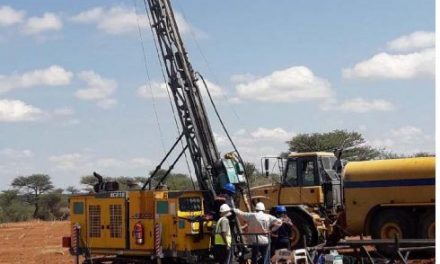
E-Tech Resources updates Eureka Project drilling for rare earths in Erongo

E-Tech Resources Inc., a rare earth exploration company from Canada this week provided an update on the Eureka Project where the company has been drilling for rare earth elements (REE) since 2016.
E-Tech Resources Chief Executive, Elbert Loois congratulated the team for hitting the targets of the first 7 holes of their first diamond drilling campaign, as they wait assay result from the remaining 13 holes that have been drilled so far.
The Eureka Project is located approximately 250 km north-west of Windhoek and 140 km east of Walvis Bay. The Eureka deposit lies within Exclusive Prospecting Licence number 6762 which covers Eureka Farm 99 and Sukses Farm 90 in the Erongo Region.
Loois emphasised that the assay results received to date reveal an extension of the mineralization outside of the current resources estimate in several monazite bearing carbonatitic dykes. “These results confirmed the presence of these dykes up to 160 meters vertical depth, while remaining open at depth and along strike,” he stated.
He further confirmed that E-Tech Resources aligns their sustainability policy with the guidelines of the United Nations’ Sustainable Development Goals (SDG). “The Eureka REE Project will secure sustainable value to its stakeholders by installing a sustainability committee to guide its efforts in areas such as health and safety, community support, efficient energy consumption, job creation, environmental care and many more,” he explained.
E-Tech Resources said they have recognized Namibian as an important mining country and the mining sector is a major contributor to the economy. In their view there will be a worldwide push in the next decade for a ‘green revolution’ which consequently will lead to an increase in demand for rare earth elements, mostly for “smart” industry and batteries.
The company confirmed that exploration started in 2016, at the Eureka Project, with ground magnetic and radiometric surveys over the known carbonatite outcrops to generate several drill targets. They also announced their first technical disclosures with assay results for 7 out of 20 diamond drilling (DD) holes and for all reverse circulation drilling holes completed in 2021. “Further DD results from the first campaign are expected in Q1 2022, dependent on lab processing time and the promising results so far have resulted in the commencement of a 2nd combined drilling campaign, which is still ongoing,” they added.
The so-called rare earth elements are a set of 17 metallic elements on the periodic table and are necessary components for more than 200 high-tech products, including electric vehicles and wind generation, while Neodymium (Nd) is one of the best-known rare earth elements used mainly used in the production of high strength permanent magnets for efficient motors and turbines.
“Growth at 6% year-on-year is expected for Neodymium and Praseodymium, the main elements of focus of the Eureka Project, as more societies adopt low carbon alternatives and these two REEs represent about 80-90% of the market value of all REEs,” the emphasised.









































